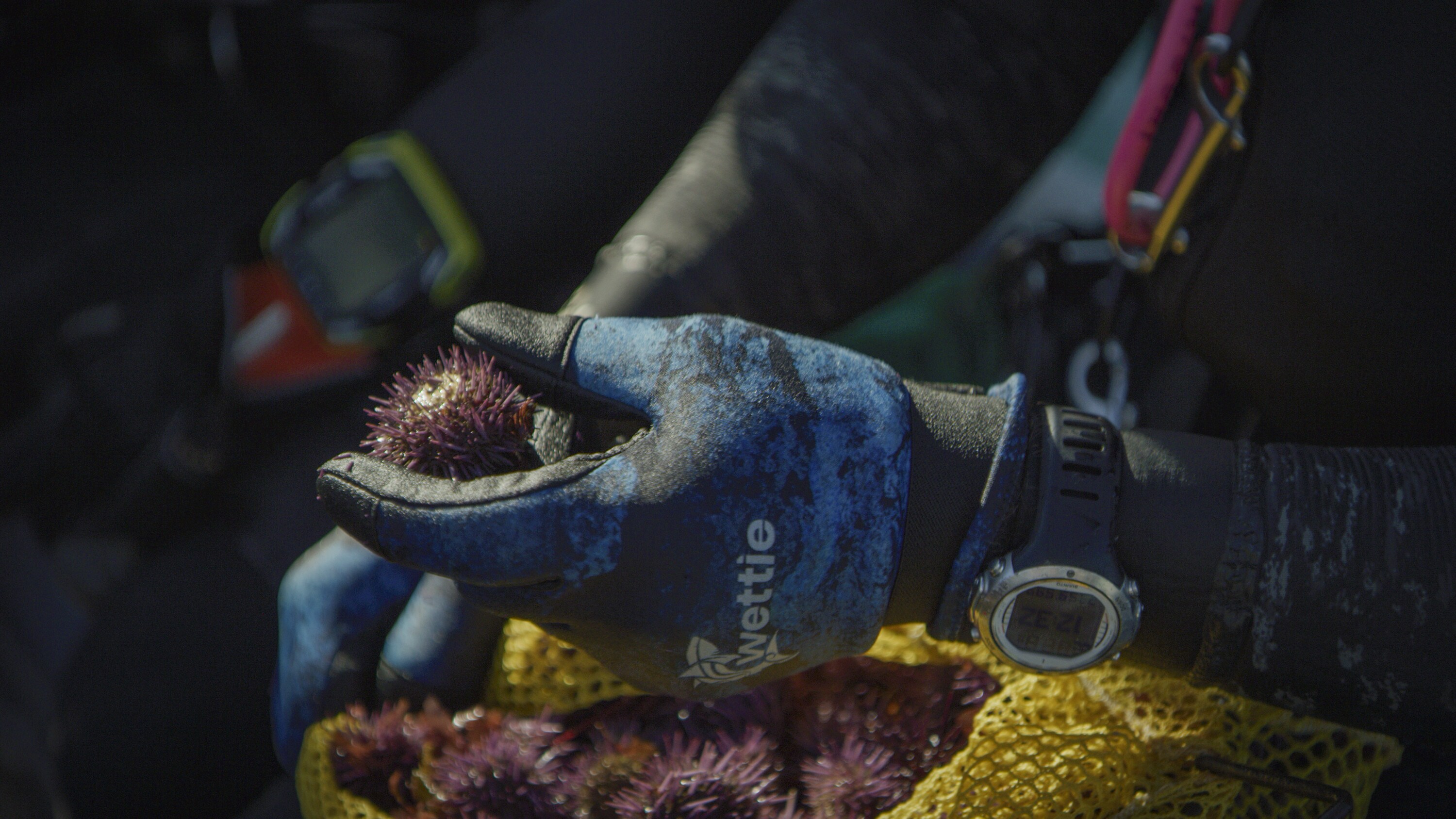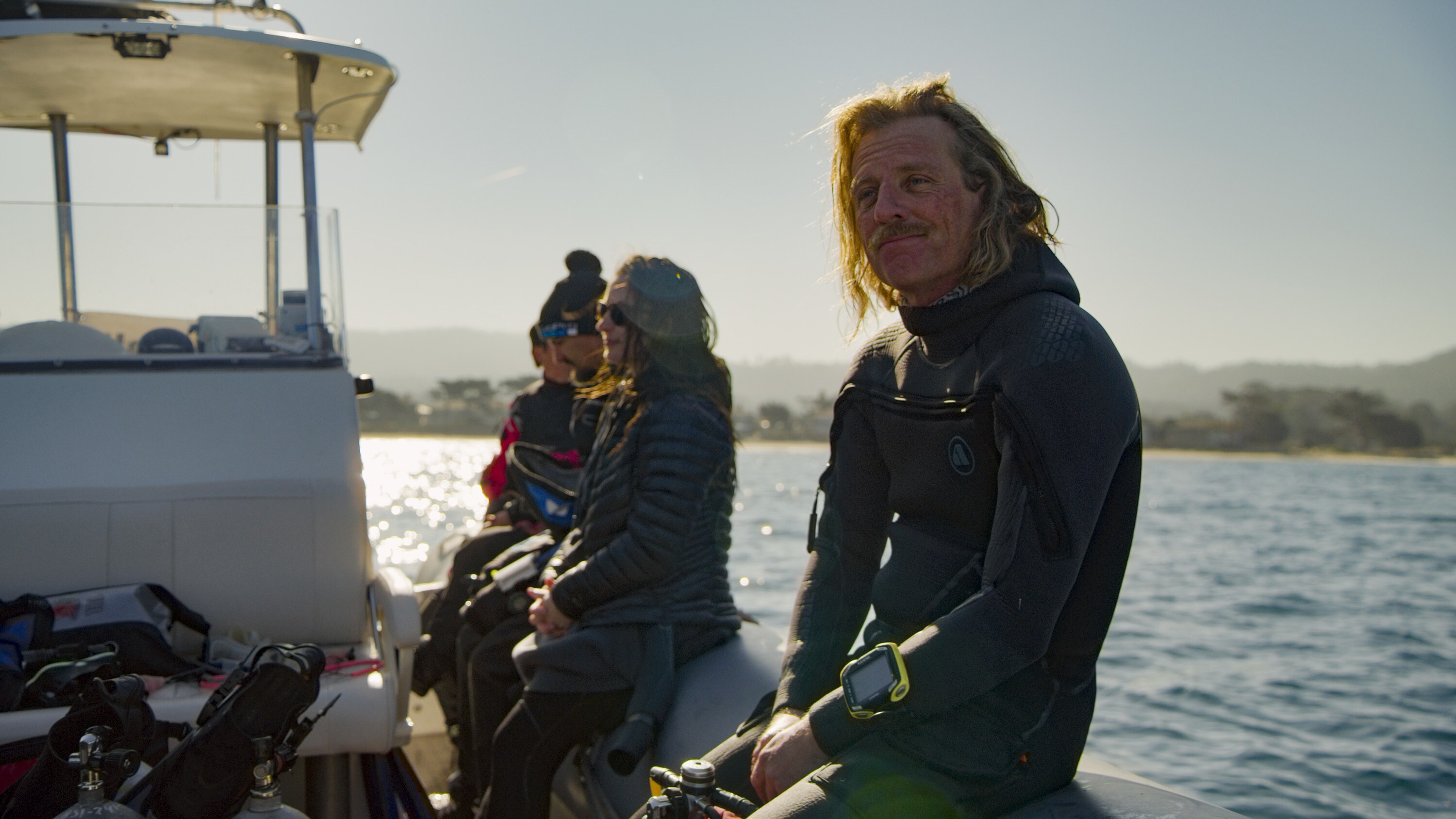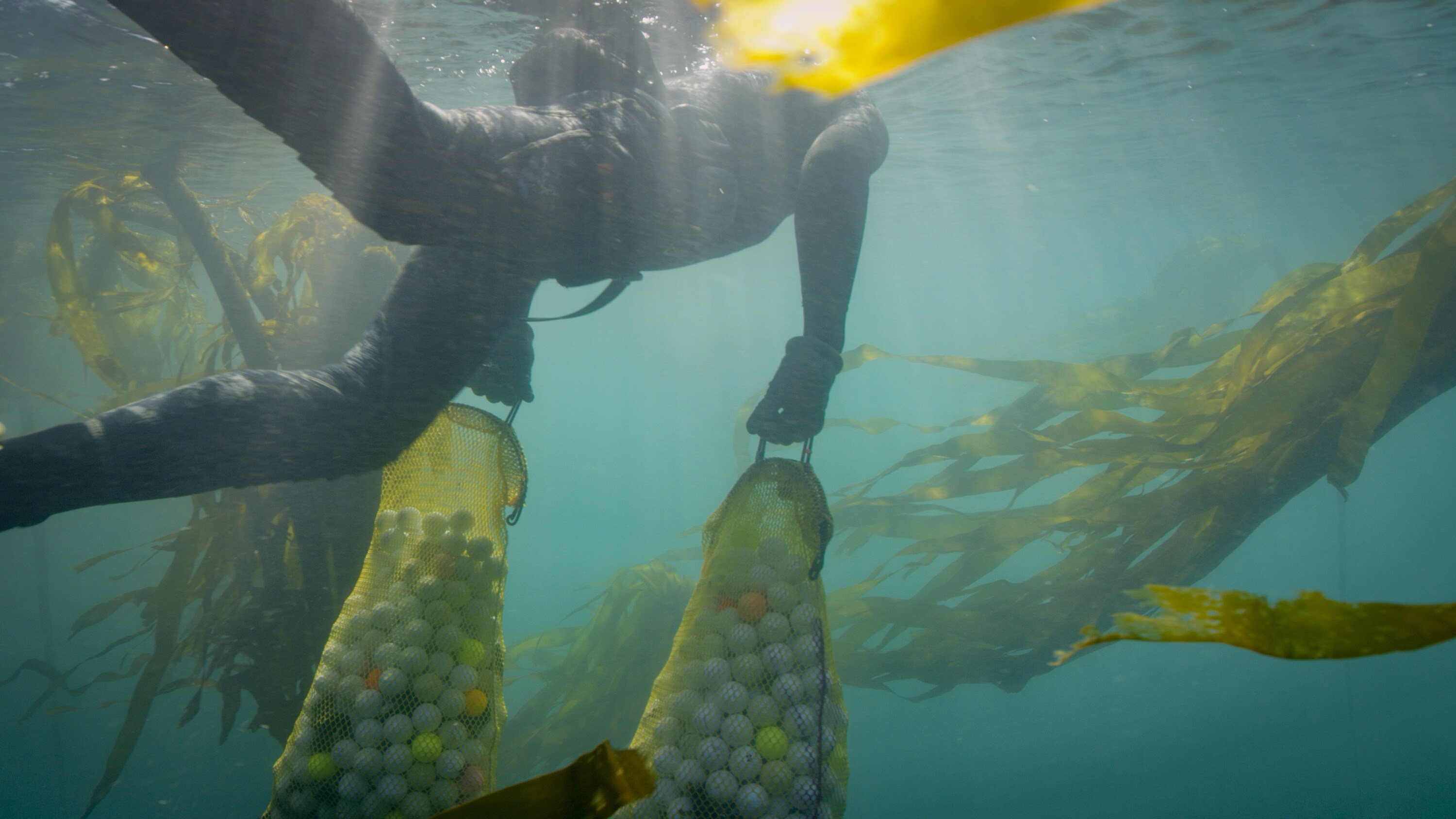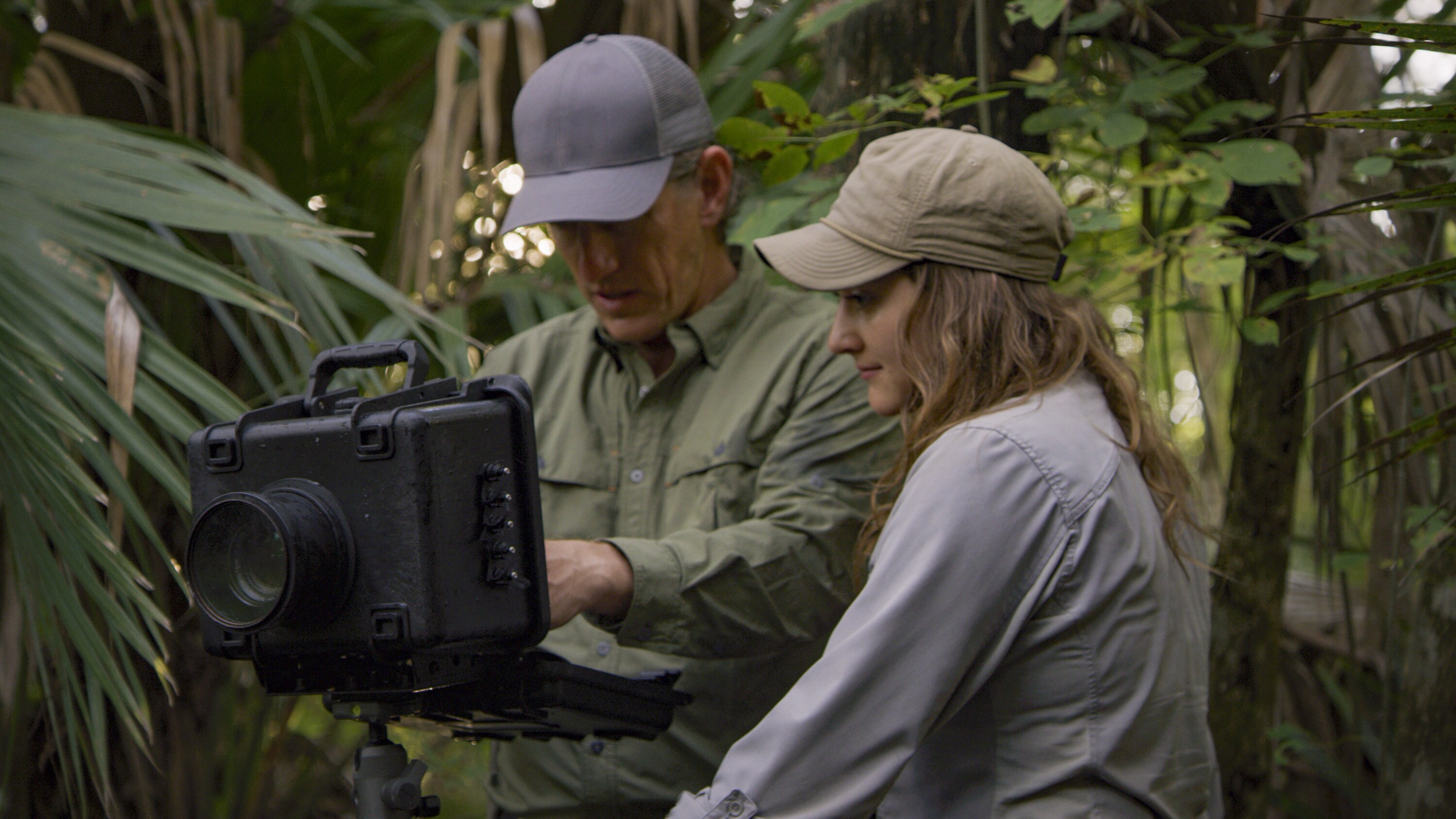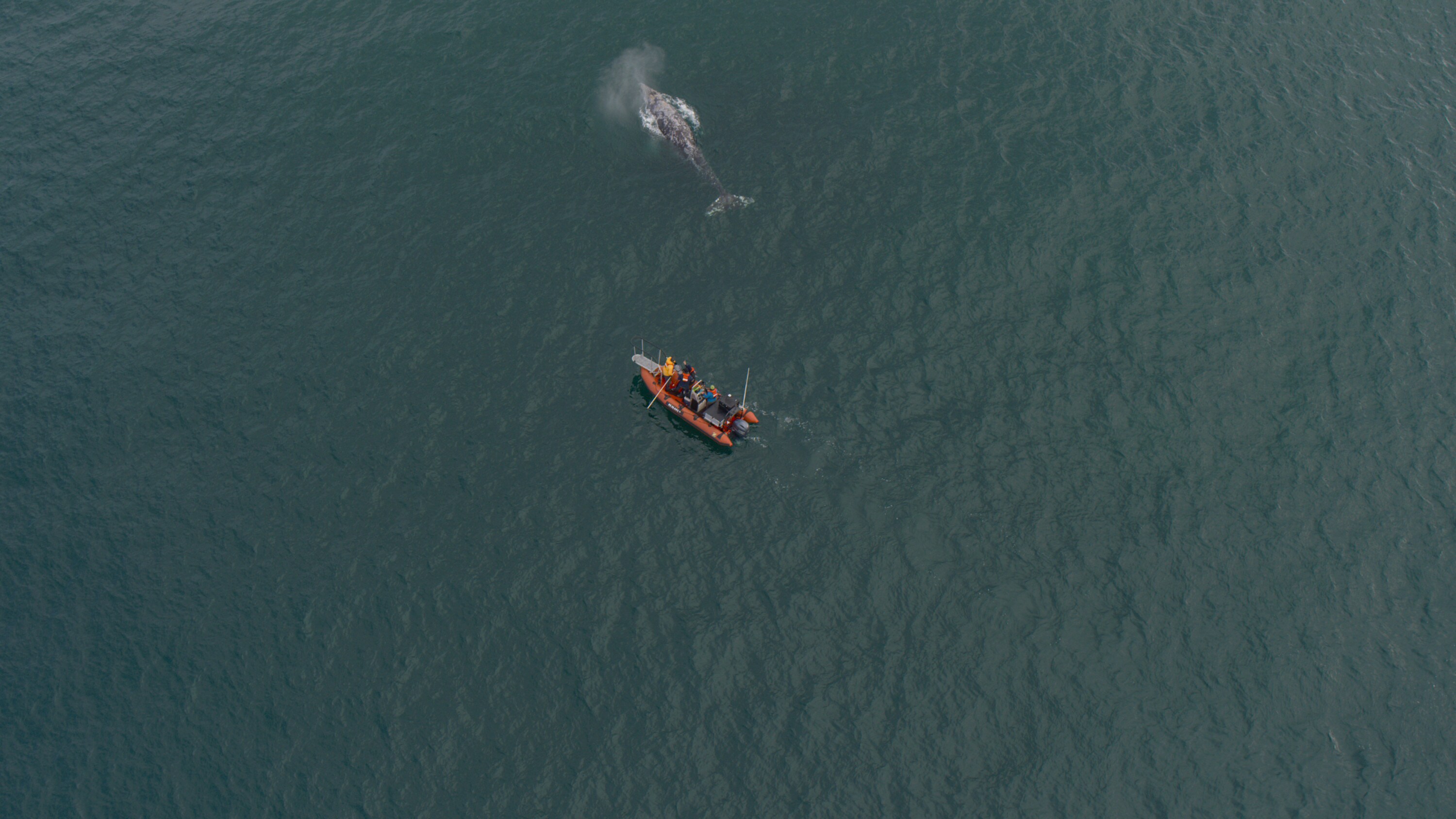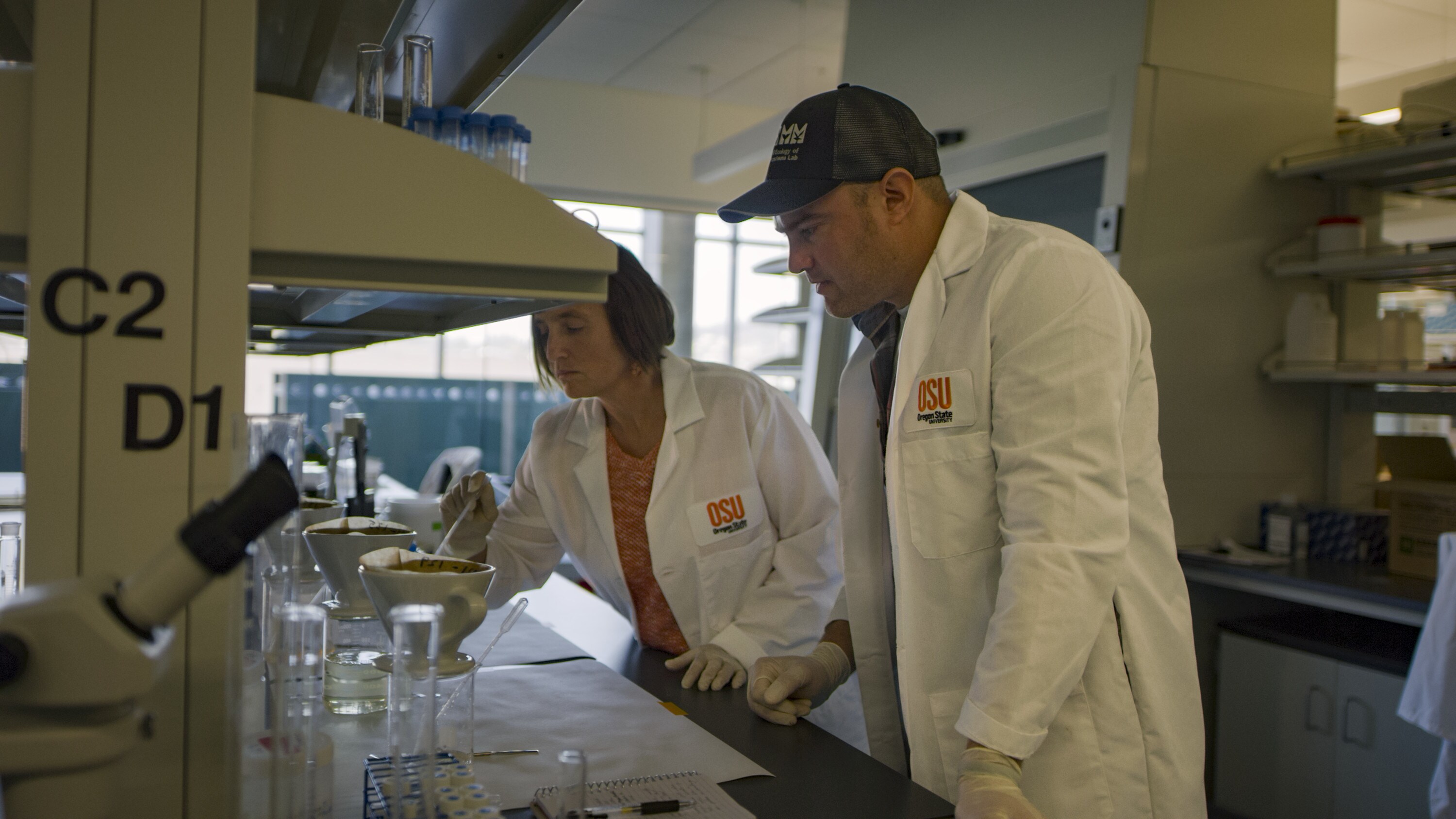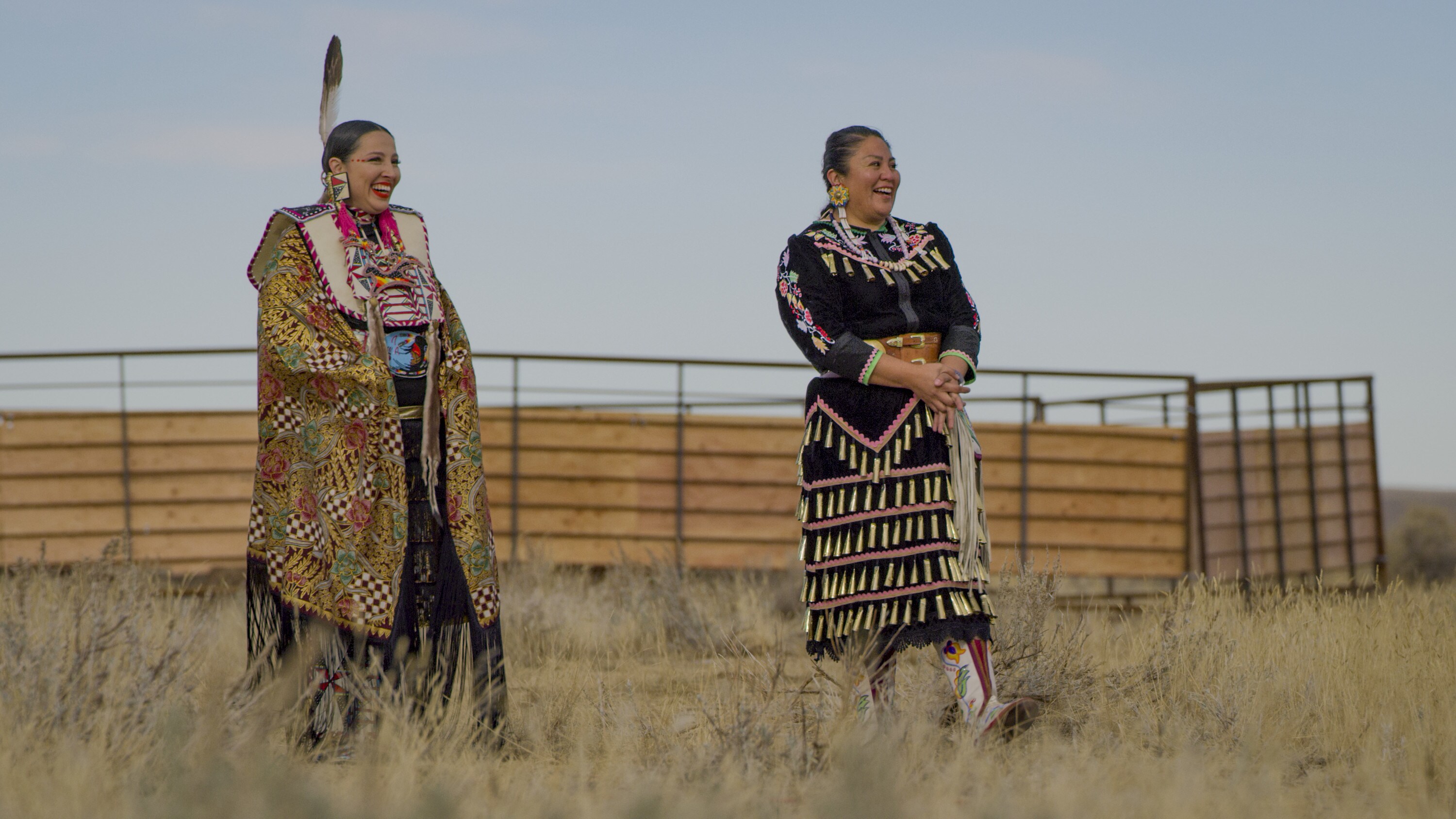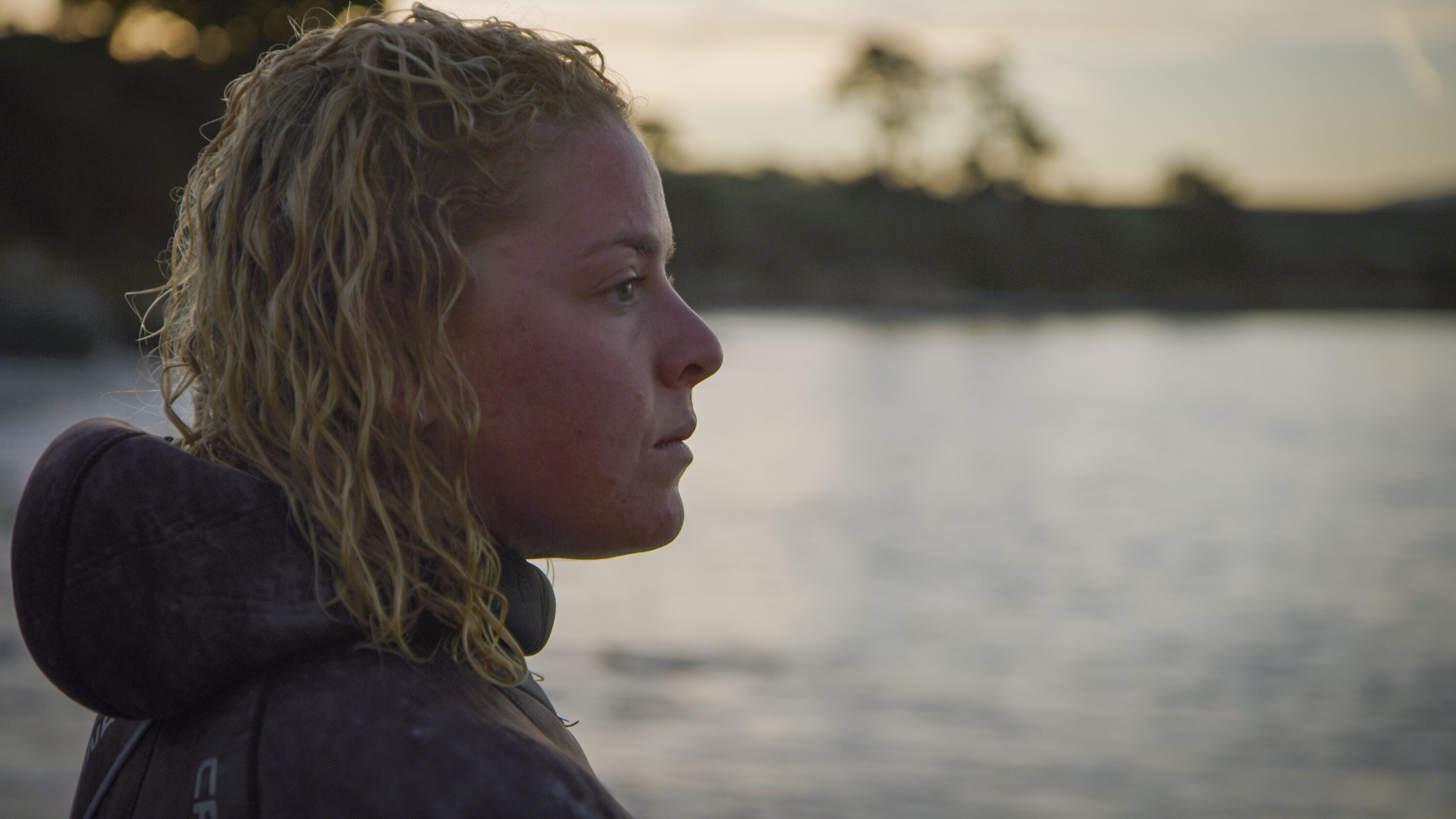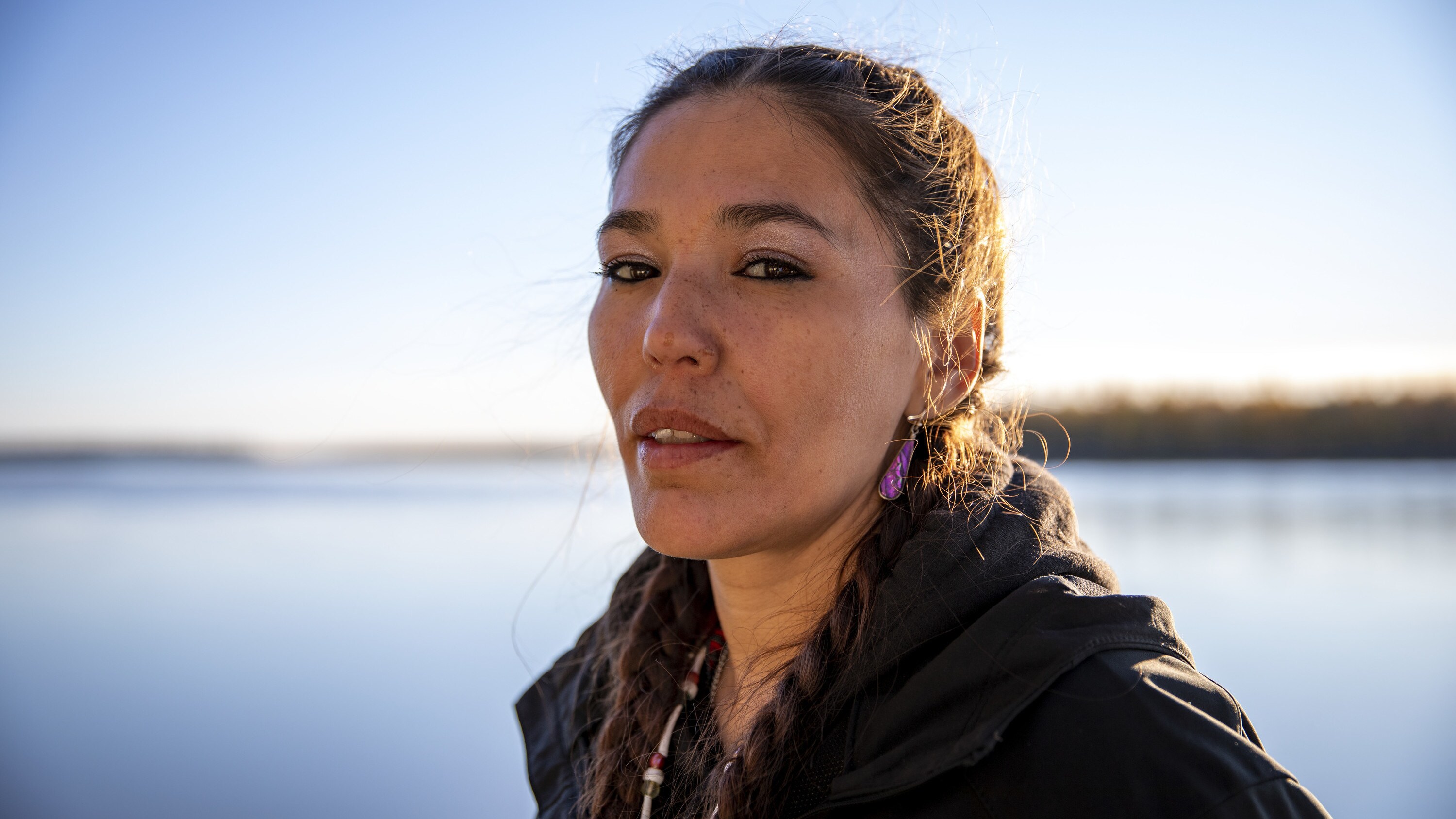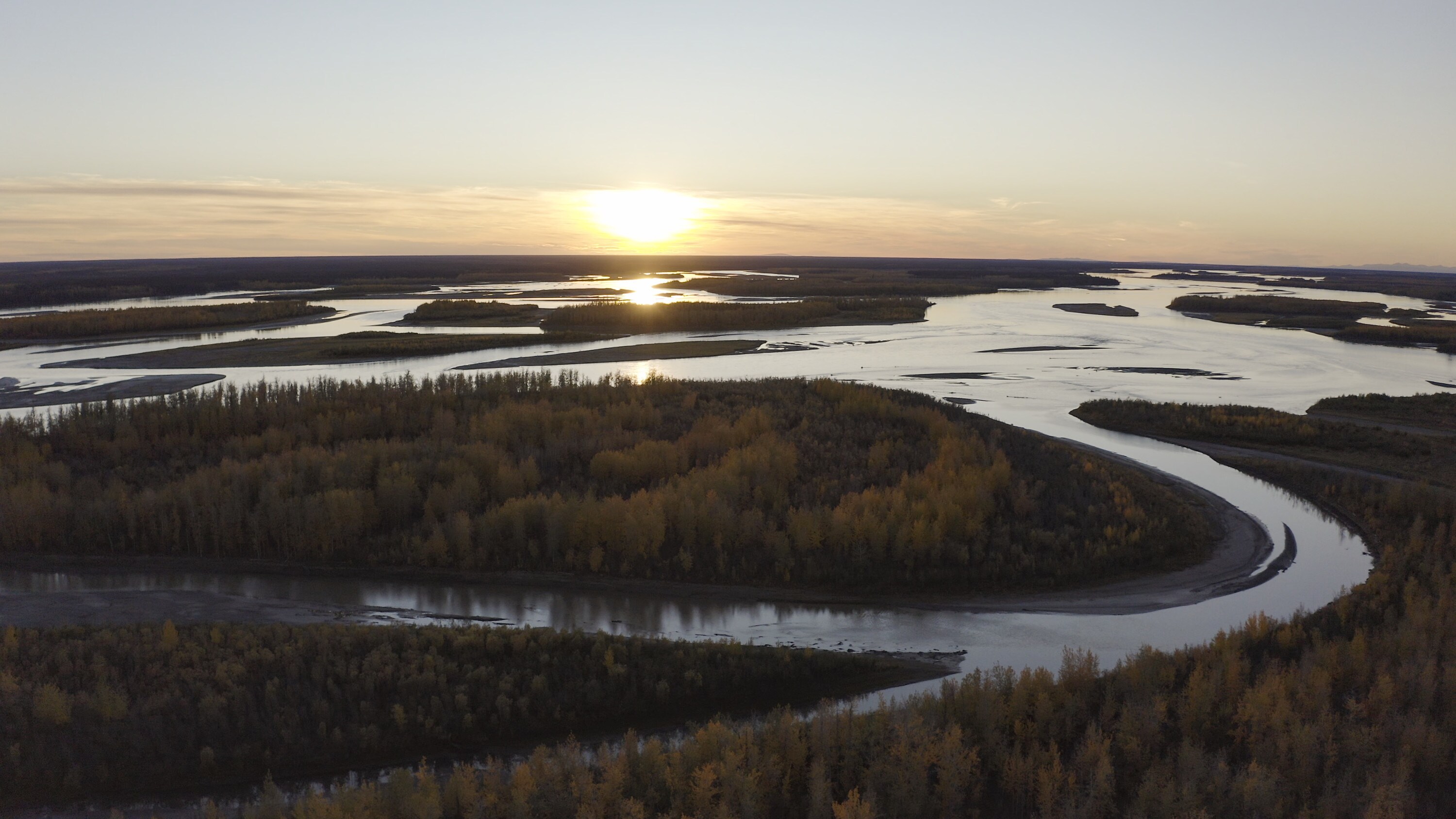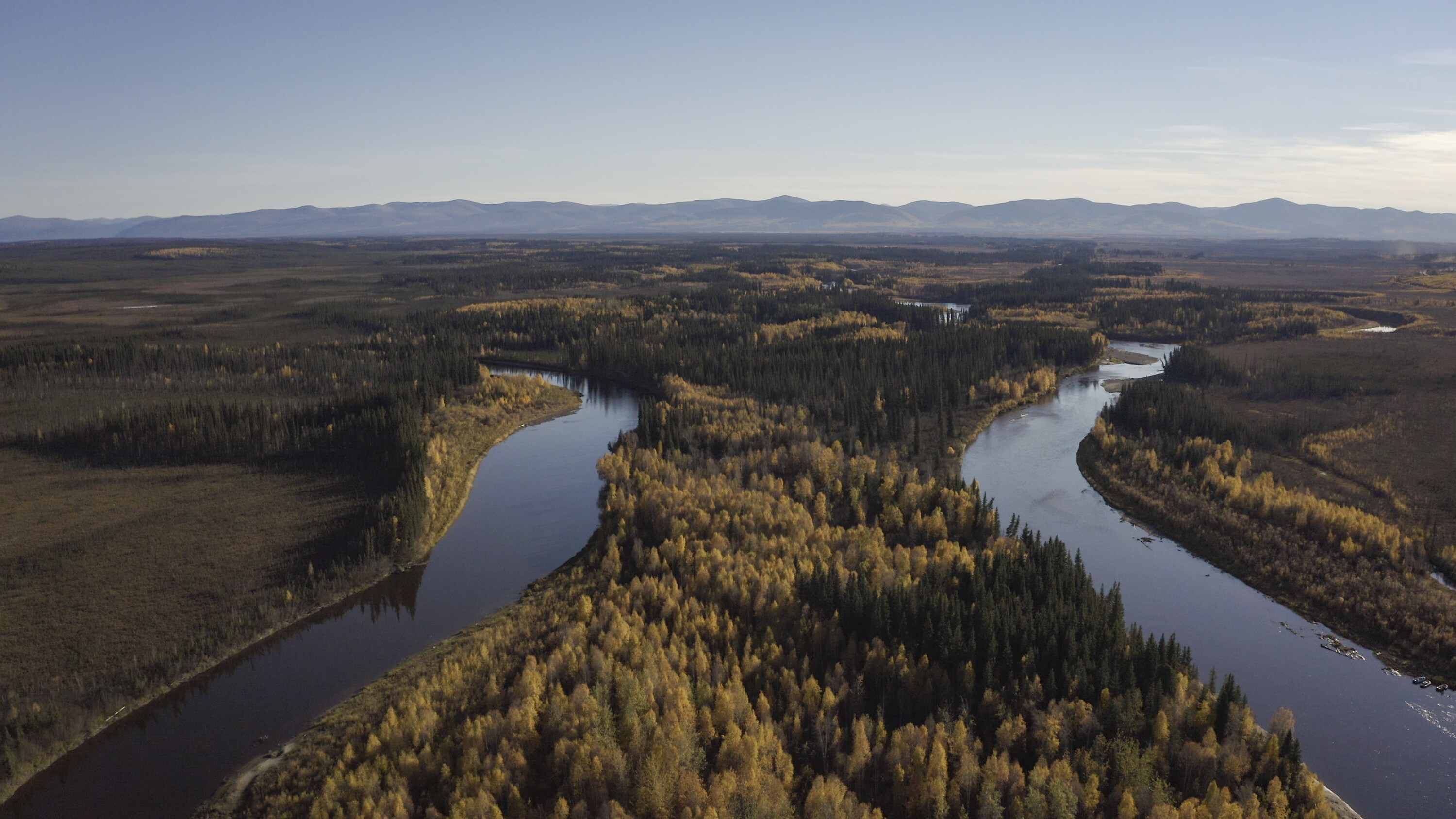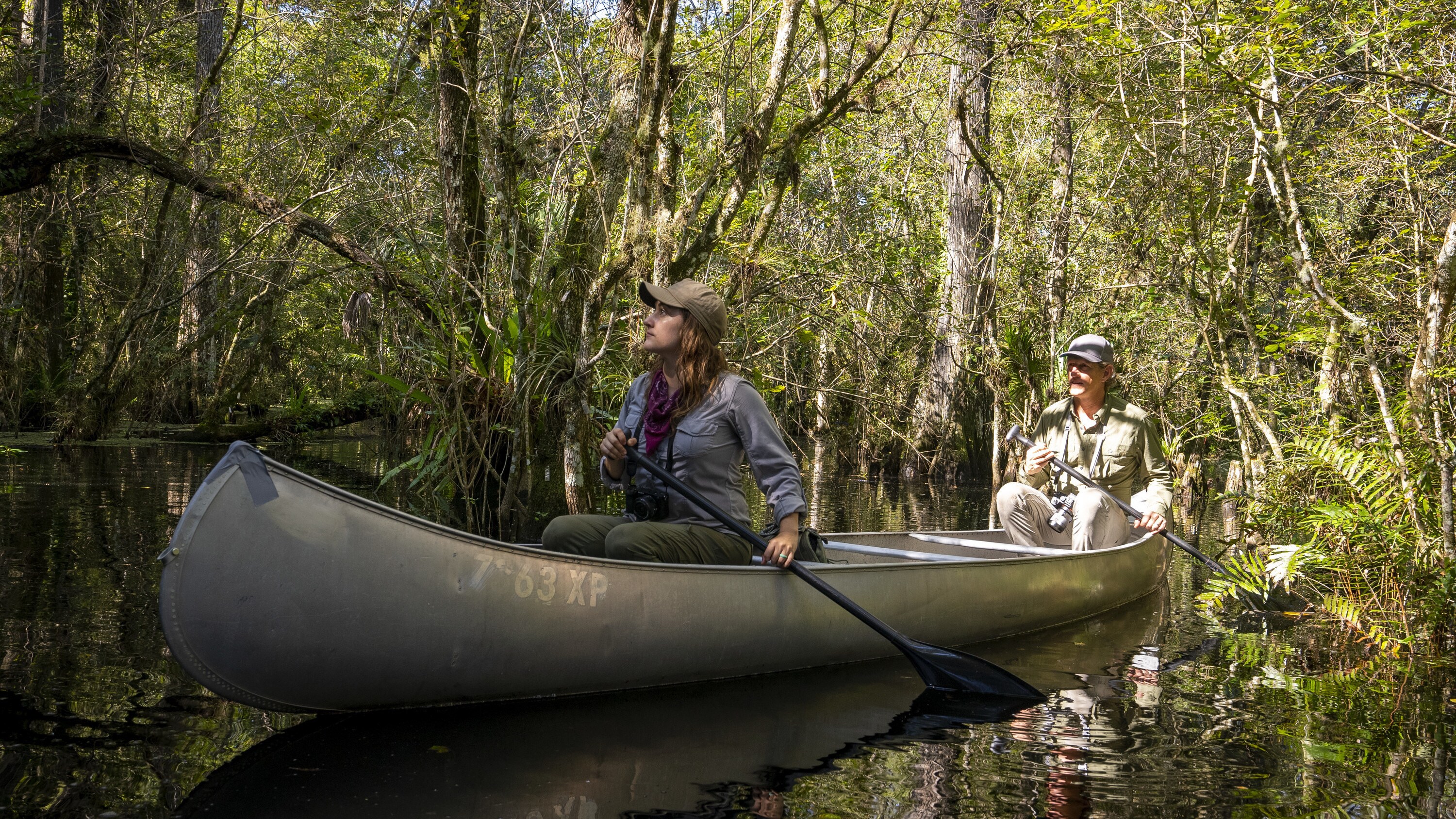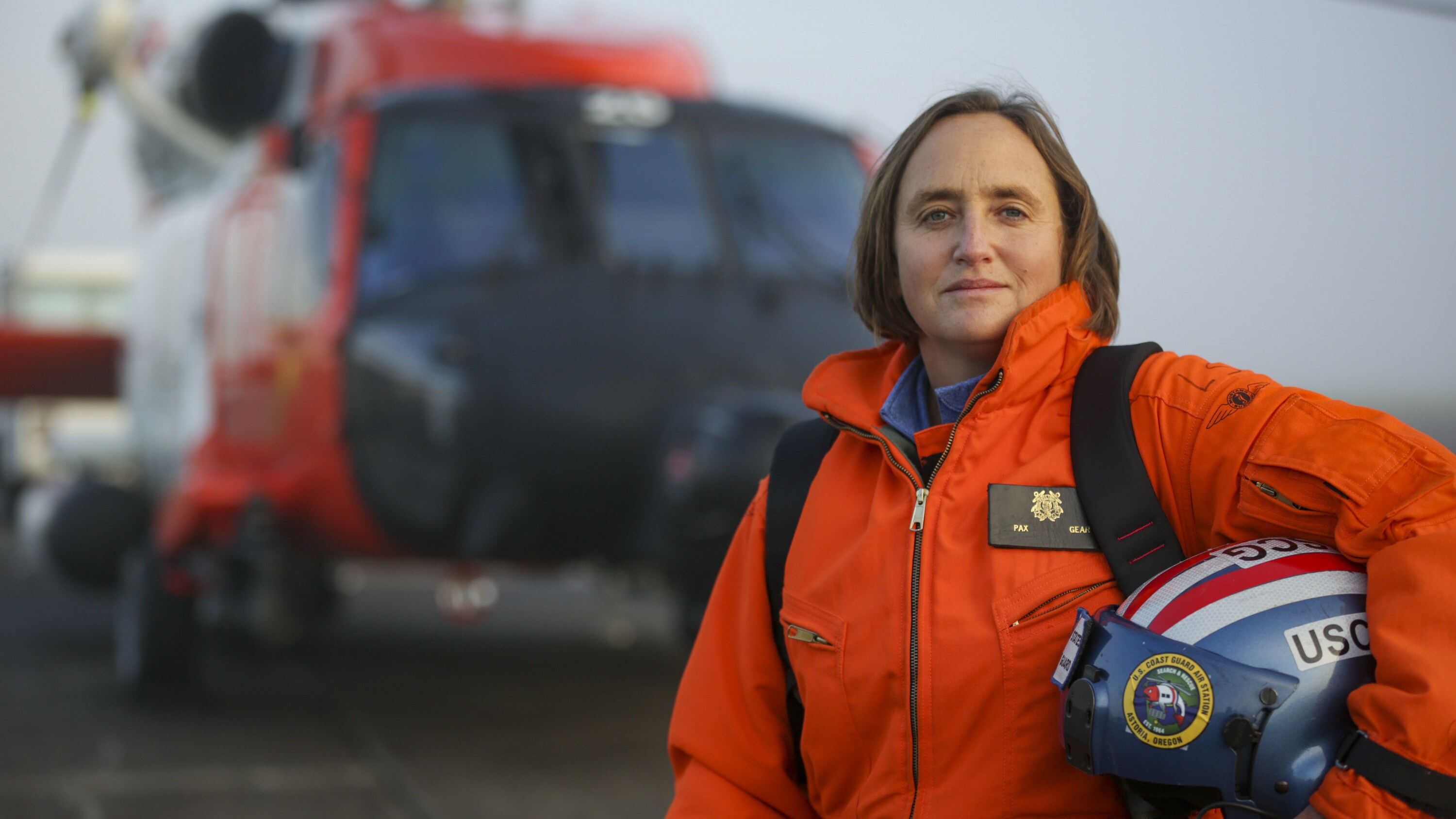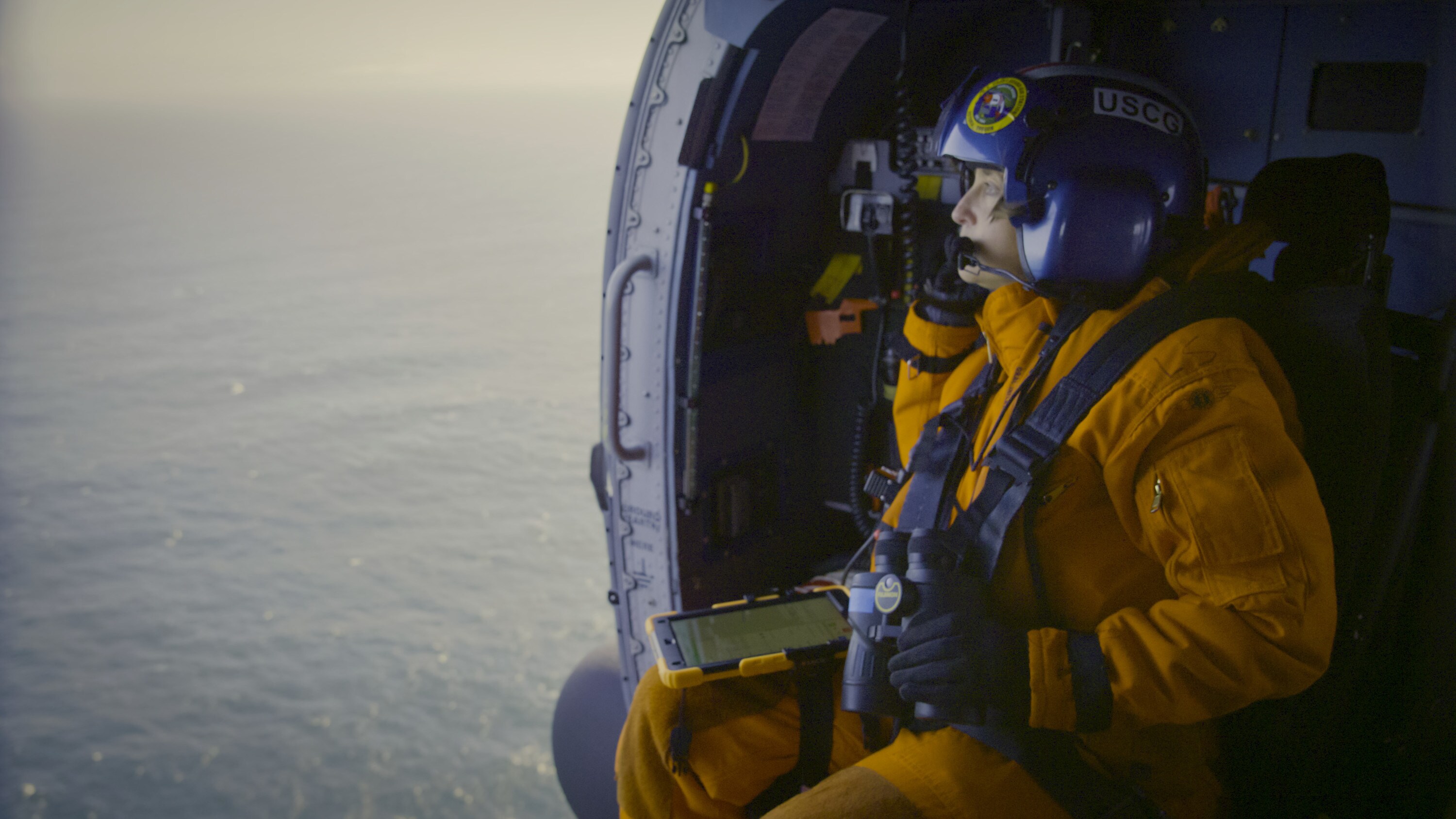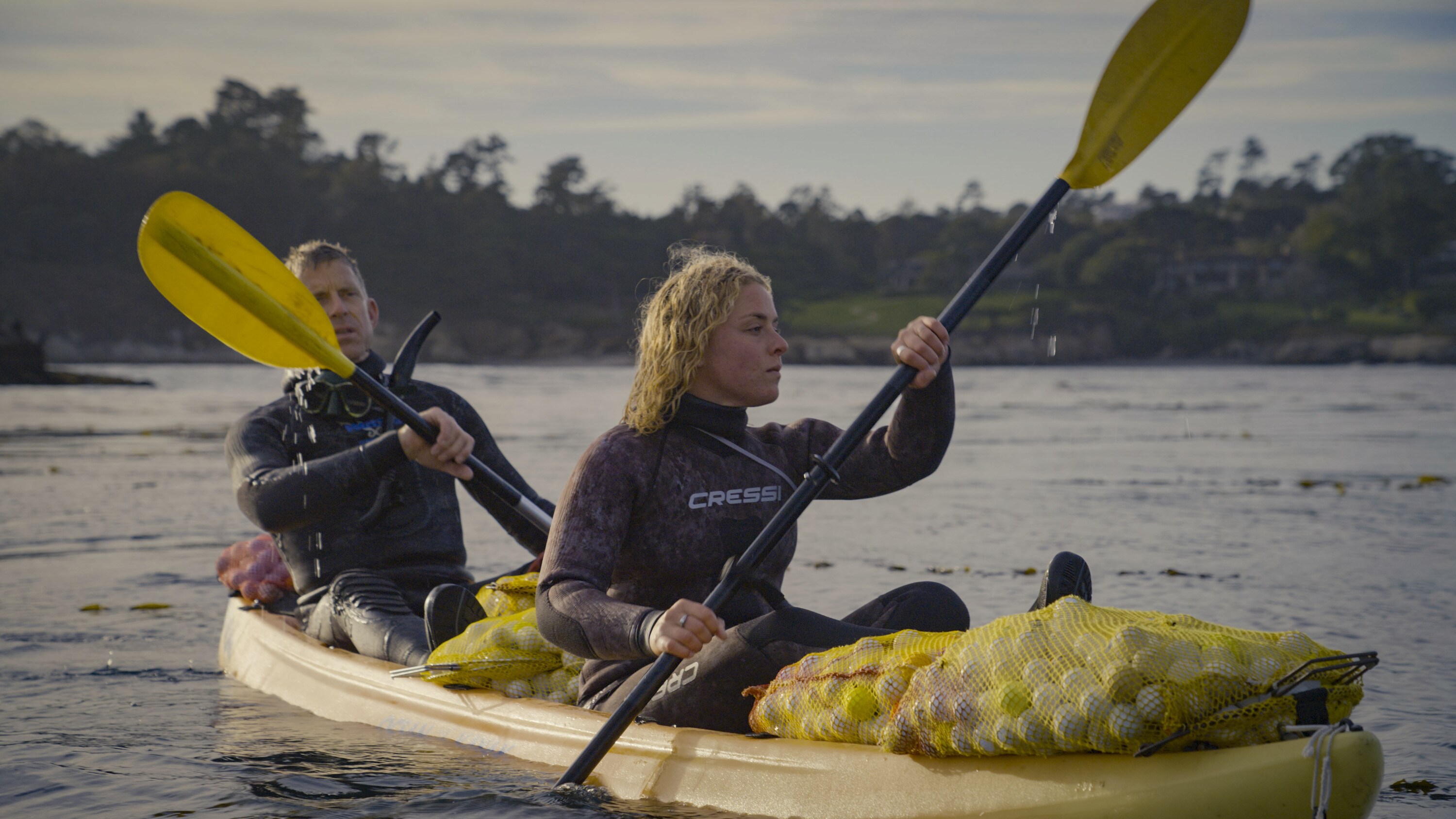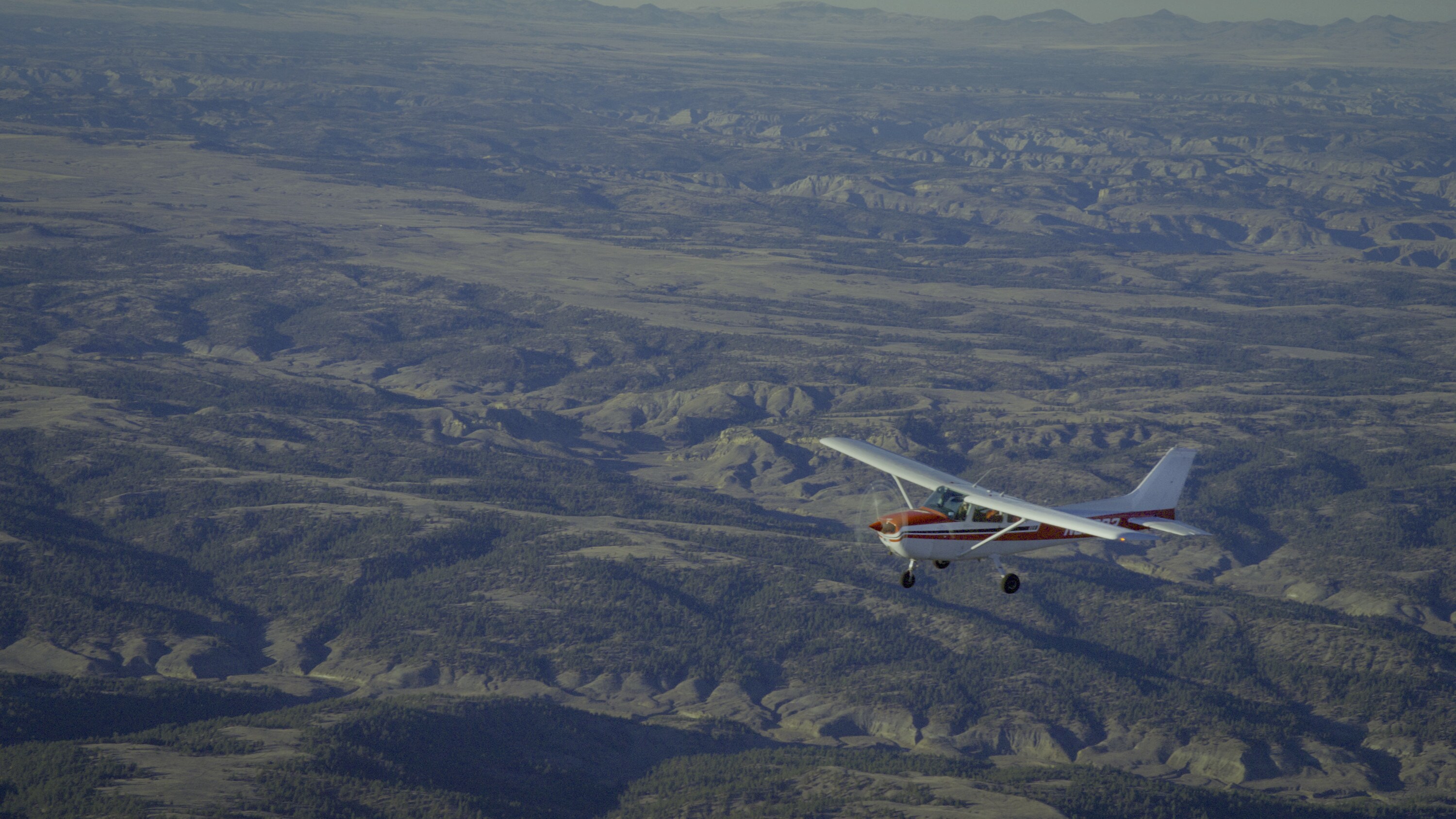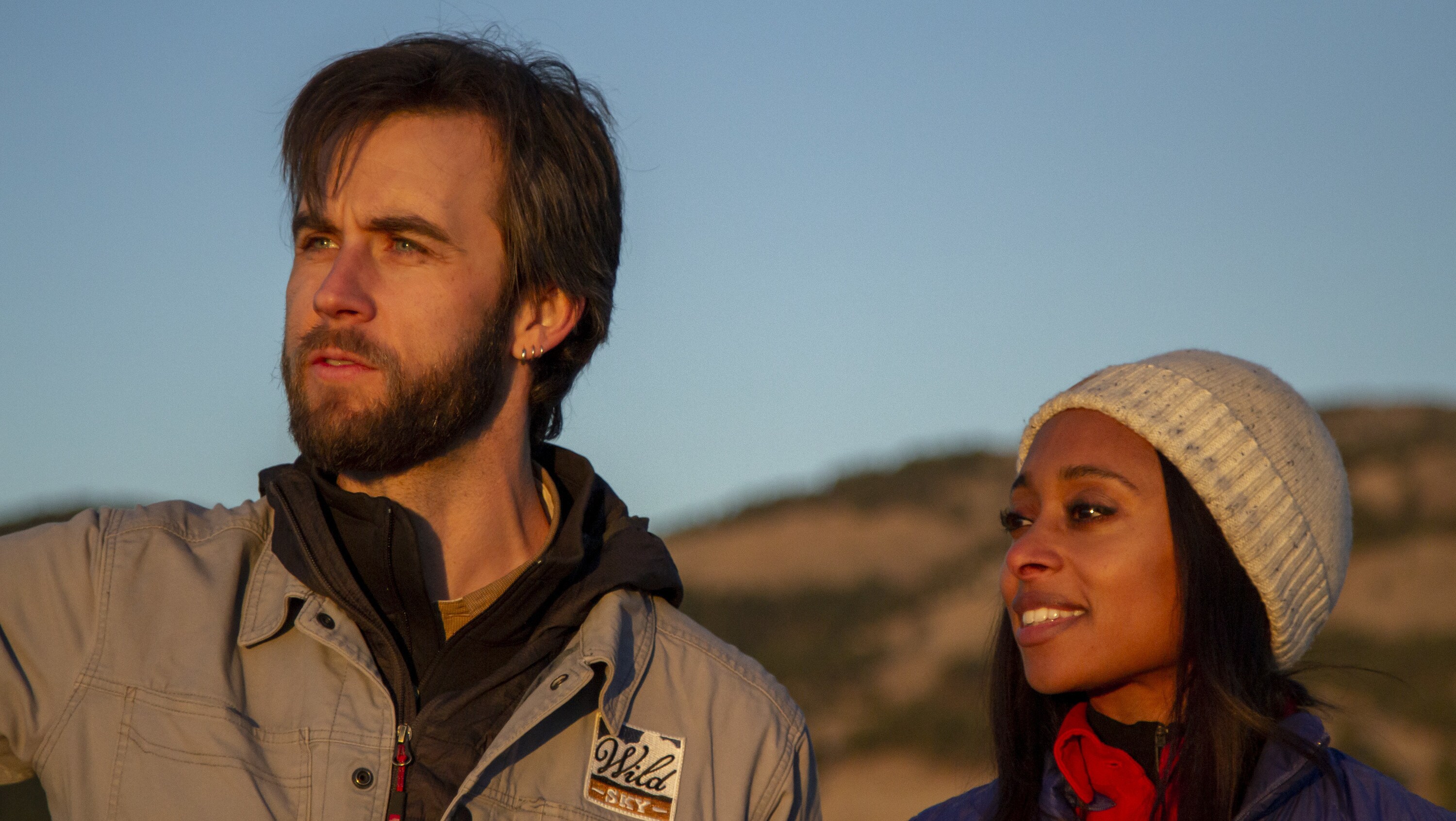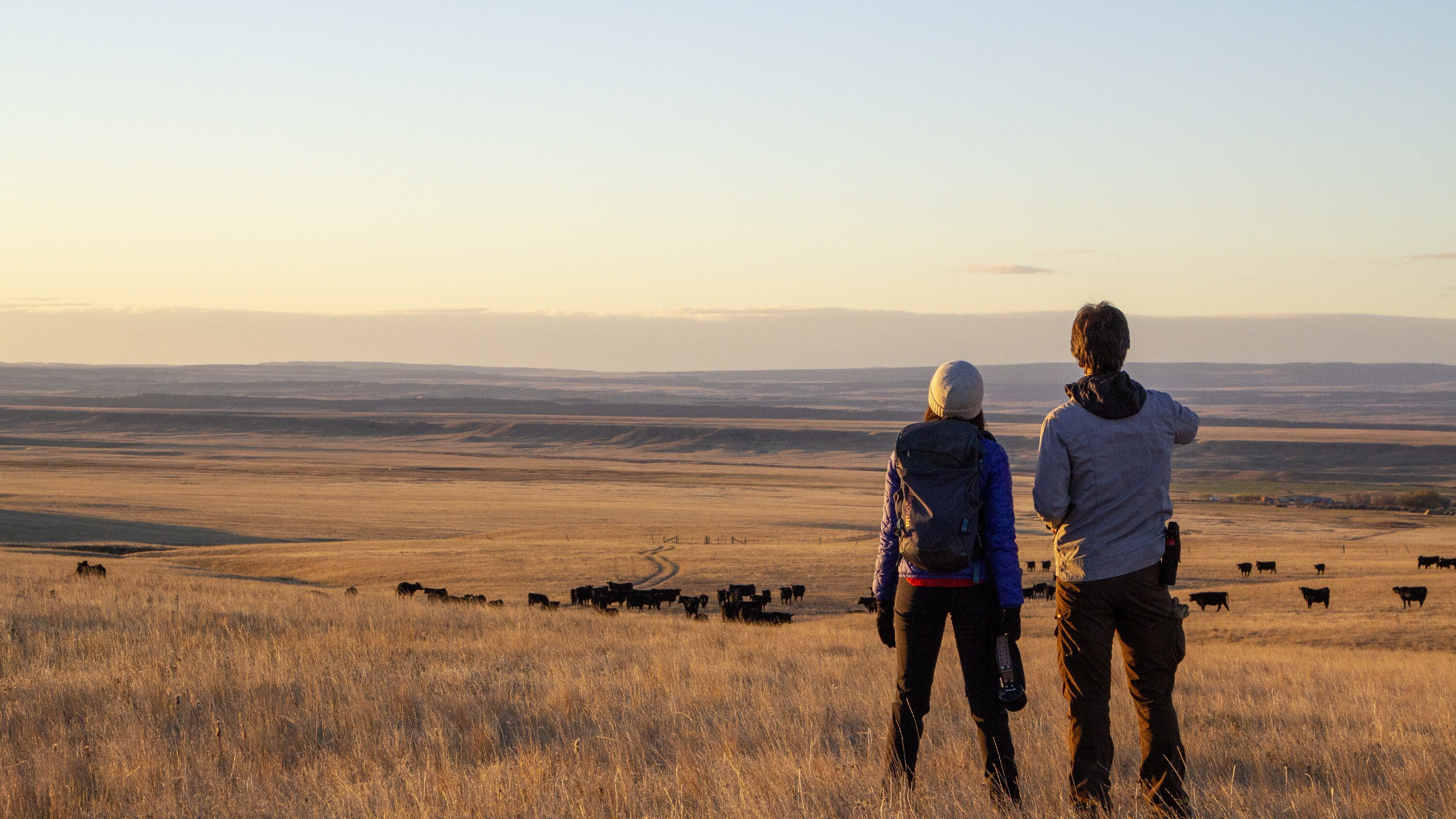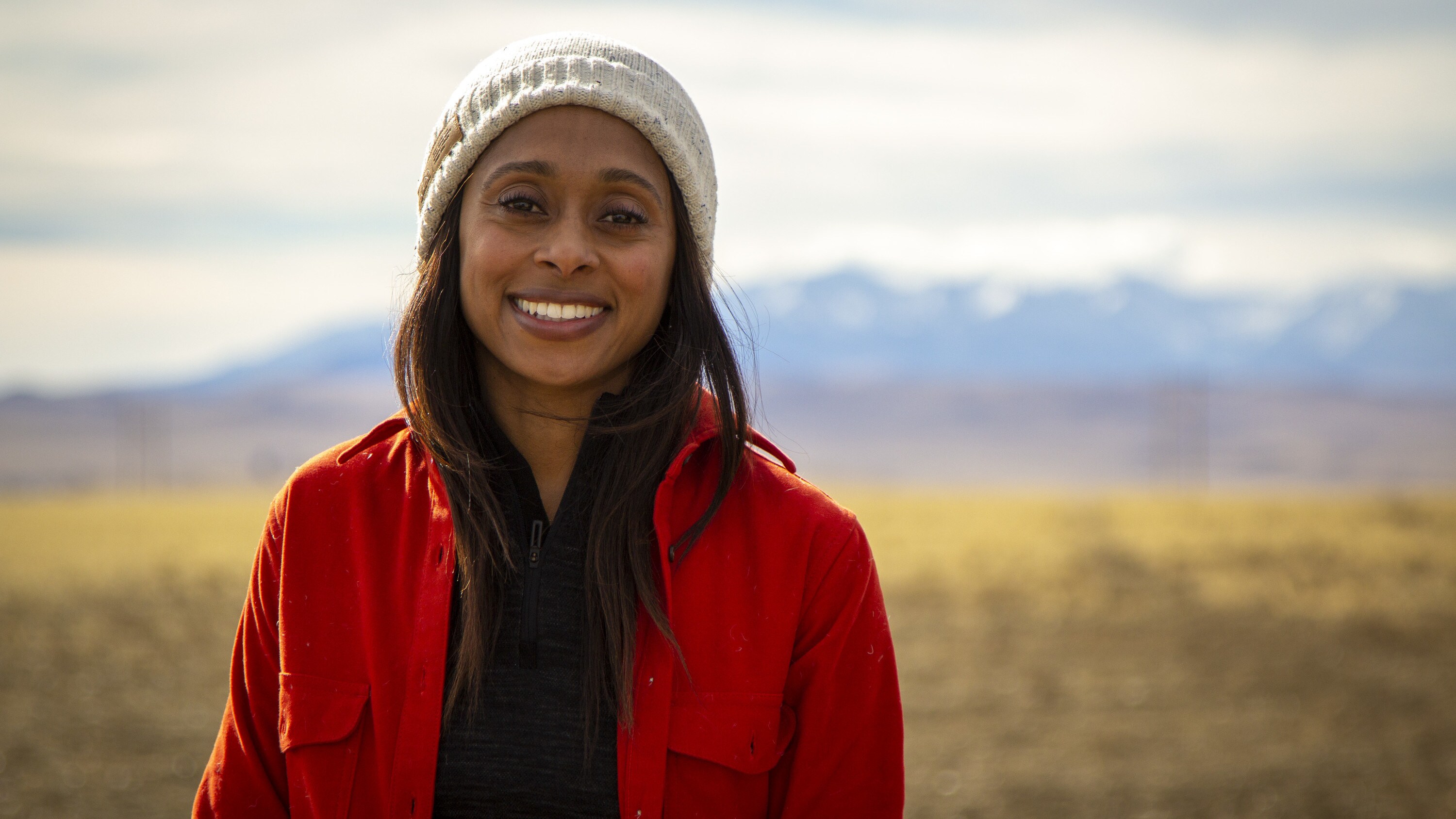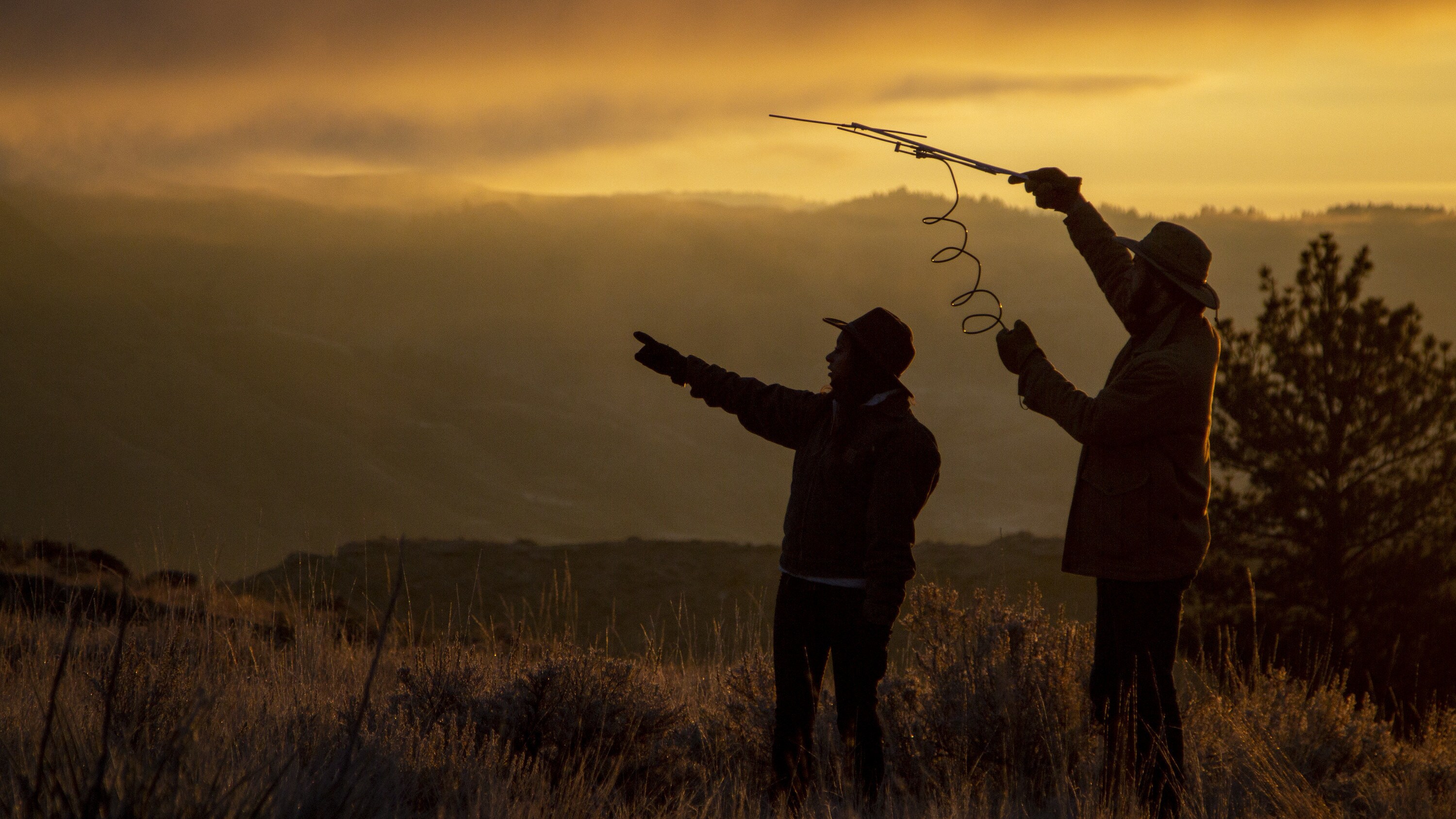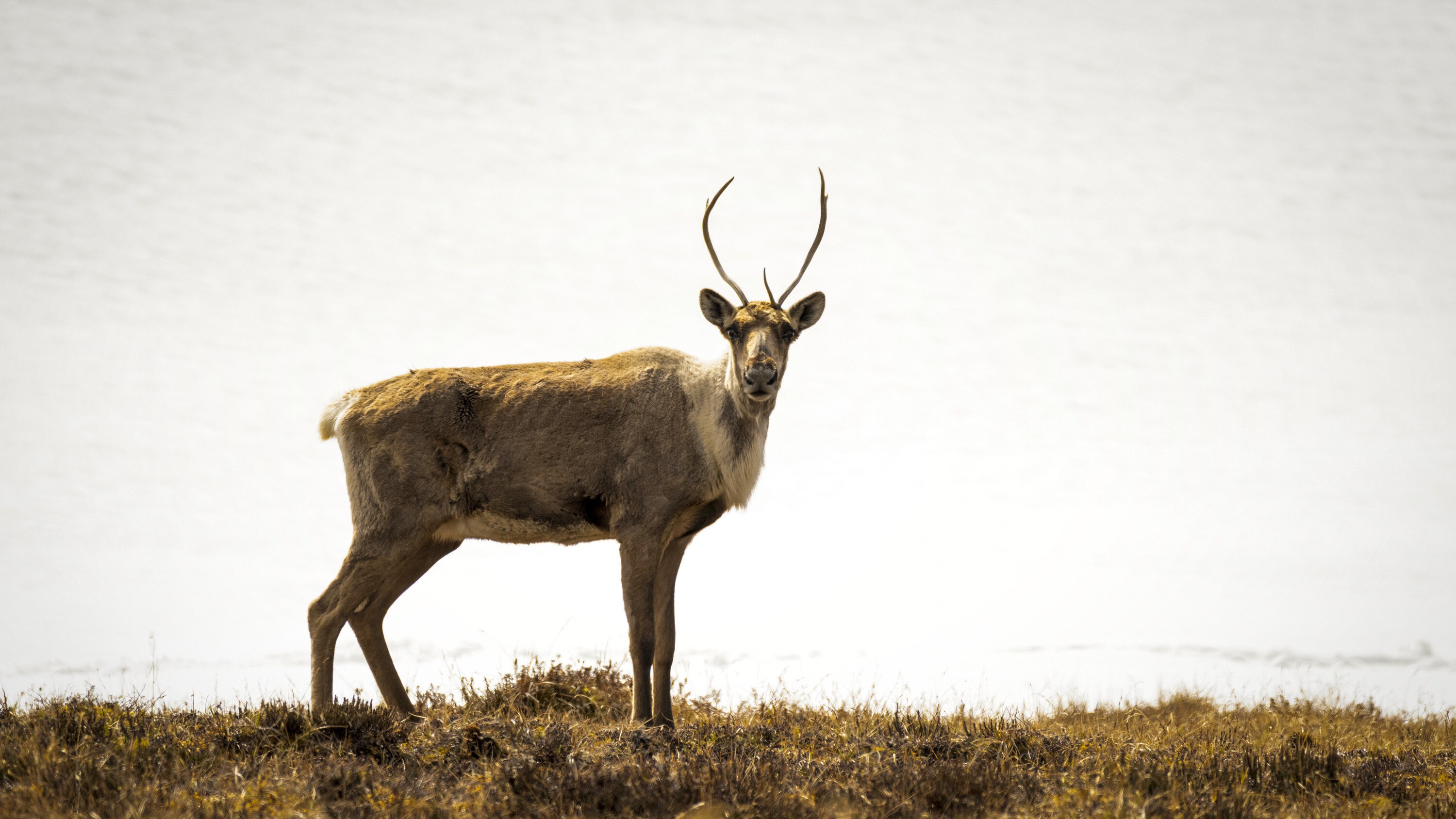America the Beautiful Episode 106 - "Brave New World"
Across North America, a growing band of wildlife heroes are fighting to preserve our most iconic animals and wildest places. Whether the battle is to rewild the northern prairies, save our rarest big cat or restore an underwater forest, these champions are everyday people of all ages and from all walks of life, sharing one thing in common: They care enough to make a difference.
To download high-res images, click on the image and then use the Download button in the overlay that appears.
A diver holds one of the many sea urchins removed from Monterey Bay by volunteers. This species has proliferated in recent years, decimating kelp forests which are essential to the wildlife of these shores. (National Geographic/Connor Gallagher)
ofA diver holds one of the many sea urchins removed from Monterey Bay by volunteers. This species has proliferated in recent years, decimating kelp forests which are essential to the wildlife of these shores. (National Geographic/Connor Gallagher)
ofDive master and reef surveyor Keith Rootsaert sits on a boat after successfully removing invasive purple sea urchins from kelp. (National Geographic/Andrew Thompson)
ofDive master and reef surveyor Keith Rootsaert sits on a boat after successfully removing invasive purple sea urchins from kelp. (National Geographic/Andrew Thompson)
ofAlex Weber swims to the surface carrying two full bags of golf balls. (National Geographic/Connor Gallagher)
ofAlex Weber swims to the surface carrying two full bags of golf balls. (National Geographic/Connor Gallagher)
ofCarlton Ward and Malia Byrtus set up a remote camera trap to capture a photo of the elusive Florida panther. (National Geographic/Andrew Thompson)
ofCarlton Ward and Malia Byrtus set up a remote camera trap to capture a photo of the elusive Florida panther. (National Geographic/Andrew Thompson)
ofA research vessel floats next to a gray whale, waiting to collect its poop as part of a study to analyze the health of the gray whale population. (National Geographic/Austin Ferguson)
ofA research vessel floats next to a gray whale, waiting to collect its poop as part of a study to analyze the health of the gray whale population. (National Geographic/Austin Ferguson)
ofWhale scientist Leigh Torres and a colleague filter whale poop to investigate why gray whale populations have started to decline in recent years. (National Geographic/Andrew Thompson)
ofWhale scientist Leigh Torres and a colleague filter whale poop to investigate why gray whale populations have started to decline in recent years. (National Geographic/Andrew Thompson)
ofTwo Chippewa Cree women dance to celebrate the return of the bison. (National Geographic/Andrew Thompson)
ofTwo Chippewa Cree women dance to celebrate the return of the bison. (National Geographic/Andrew Thompson)
ofA bison waiting to be released into its new home. Large herds have not been seen in this part of Montana roaming free for over 150 years. Their reintroduction is a significant moment for the Chippewa Cree tribe who live here. (National Geographic/Andrew Thompson)
ofA bison waiting to be released into its new home. Large herds have not been seen in this part of Montana roaming free for over 150 years. Their reintroduction is a significant moment for the Chippewa Cree tribe who live here. (National Geographic/Andrew Thompson)
ofAlex Weber, founder of the Plastic Pick-Up project, looks back out to the sea after coming in from a dive collecting golf balls from the ocean floor. (National Geographic/Andrew Thompson)
ofAlex Weber, founder of the Plastic Pick-Up project, looks back out to the sea after coming in from a dive collecting golf balls from the ocean floor. (National Geographic/Andrew Thompson)
ofBernadette Dementieff, a tribal member of the Gwichyaa Zhee Gwich’in Tribal Government and a council member for the Arctic Refuge Defense Council, is fighting to preserve the Arctic National Wildlife Refuge-Coastal Plain, The Porcupine Caribou Herd and the Gwich’in way of life. (National Geographic/Andrew Thompson)
ofBernadette Dementieff, a tribal member of the Gwichyaa Zhee Gwich’in Tribal Government and a council member for the Arctic Refuge Defense Council, is fighting to preserve the Arctic National Wildlife Refuge-Coastal Plain, The Porcupine Caribou Herd and the Gwich’in way of life. (National Geographic/Andrew Thompson)
ofBernadette Dementieff and her family ride up the Yukon River on their way to their ancestral hunting grounds. (National Geographic/Andrew Thompson)
ofBernadette Dementieff and her family ride up the Yukon River on their way to their ancestral hunting grounds. (National Geographic/Andrew Thompson)
ofThe sun reflects on the water of the Yukon flats. These lands are essential for the survival of migratory caribou. (National Geographic/Austin Ferguson)
ofThe sun reflects on the water of the Yukon flats. These lands are essential for the survival of migratory caribou. (National Geographic/Austin Ferguson)
ofThe Yukon River winding through the boreal forest. (National Geographic/Austin Ferguson)
ofThe Yukon River winding through the boreal forest. (National Geographic/Austin Ferguson)
ofCarlton Ward and Malia Brytus canoe through the swamps of their native Florida. (National Geographic/Austin Ferguson)
ofCarlton Ward and Malia Brytus canoe through the swamps of their native Florida. (National Geographic/Austin Ferguson)
ofCowboys herd their cattle through marshland. This is an old Floridian tradition but ranchers also help protect pristine swamplands from being lost to urban development. (National Geographic/Austin Ferguson)
ofCowboys herd their cattle through marshland. This is an old Floridian tradition but ranchers also help protect pristine swamplands from being lost to urban development. (National Geographic/Austin Ferguson)
ofWhale scientist Leigh Torres takes to the skies in attempt to solve the mystery of declining gray whale populations. (National Geographic/Tom Beard)
ofWhale scientist Leigh Torres takes to the skies in attempt to solve the mystery of declining gray whale populations. (National Geographic/Tom Beard)
ofWith help from the local Coast Guard, Leigh Torres is able to observe and record new and returning whales during the annual gray whale migration. (National Geographic/Andrew Thompson)
ofWith help from the local Coast Guard, Leigh Torres is able to observe and record new and returning whales during the annual gray whale migration. (National Geographic/Andrew Thompson)
ofAlex Weber and father Mike kayak out to collect golf balls polluting the sea floor. (National Geographic/Andrew Thompson)
ofAlex Weber and father Mike kayak out to collect golf balls polluting the sea floor. (National Geographic/Andrew Thompson)
ofA plane flies over the rolling plains of Montana, surveying suitable land for rewilding animals as part of the American Prairie Reserve project. (National Geographic/Austin Ferguson)
ofA plane flies over the rolling plains of Montana, surveying suitable land for rewilding animals as part of the American Prairie Reserve project. (National Geographic/Austin Ferguson)
ofDaniel Kinka and Rae Wynn-Grant are conservationists working to restore wildlife to the Montanan prairie through an organisation called American Prairie. (National Geographic/Andrew Thompson)
ofDaniel Kinka and Rae Wynn-Grant are conservationists working to restore wildlife to the Montanan prairie through an organisation called American Prairie. (National Geographic/Andrew Thompson)
ofDaniel Kinka and Rae Wynn-Grant watch as cattle are herded by Montanan ranchers. (National Geographic/Andrew Thompson)
ofDaniel Kinka and Rae Wynn-Grant watch as cattle are herded by Montanan ranchers. (National Geographic/Andrew Thompson)
ofLarge carnivore biologist Rae Wynn-Grant hopes to reconnect the american prairie through wildlife corridors, allowing native species to return and thrive in their natural habitats. (National Geographic/Andrew Thompson)
ofLarge carnivore biologist Rae Wynn-Grant hopes to reconnect the american prairie through wildlife corridors, allowing native species to return and thrive in their natural habitats. (National Geographic/Andrew Thompson)
ofDaniel Kinka and Rae Wynn-Grant use a radio tracking device to monitor some of their radio-collared wildlife in the early morning light. (National Geographic/Bertie Allison)
ofDaniel Kinka and Rae Wynn-Grant use a radio tracking device to monitor some of their radio-collared wildlife in the early morning light. (National Geographic/Bertie Allison)
ofOne of Alaska's native species, a caribou stands watch for predators. (National Geographic/Nick Hawkins)
ofOne of Alaska's native species, a caribou stands watch for predators. (National Geographic/Nick Hawkins)
of